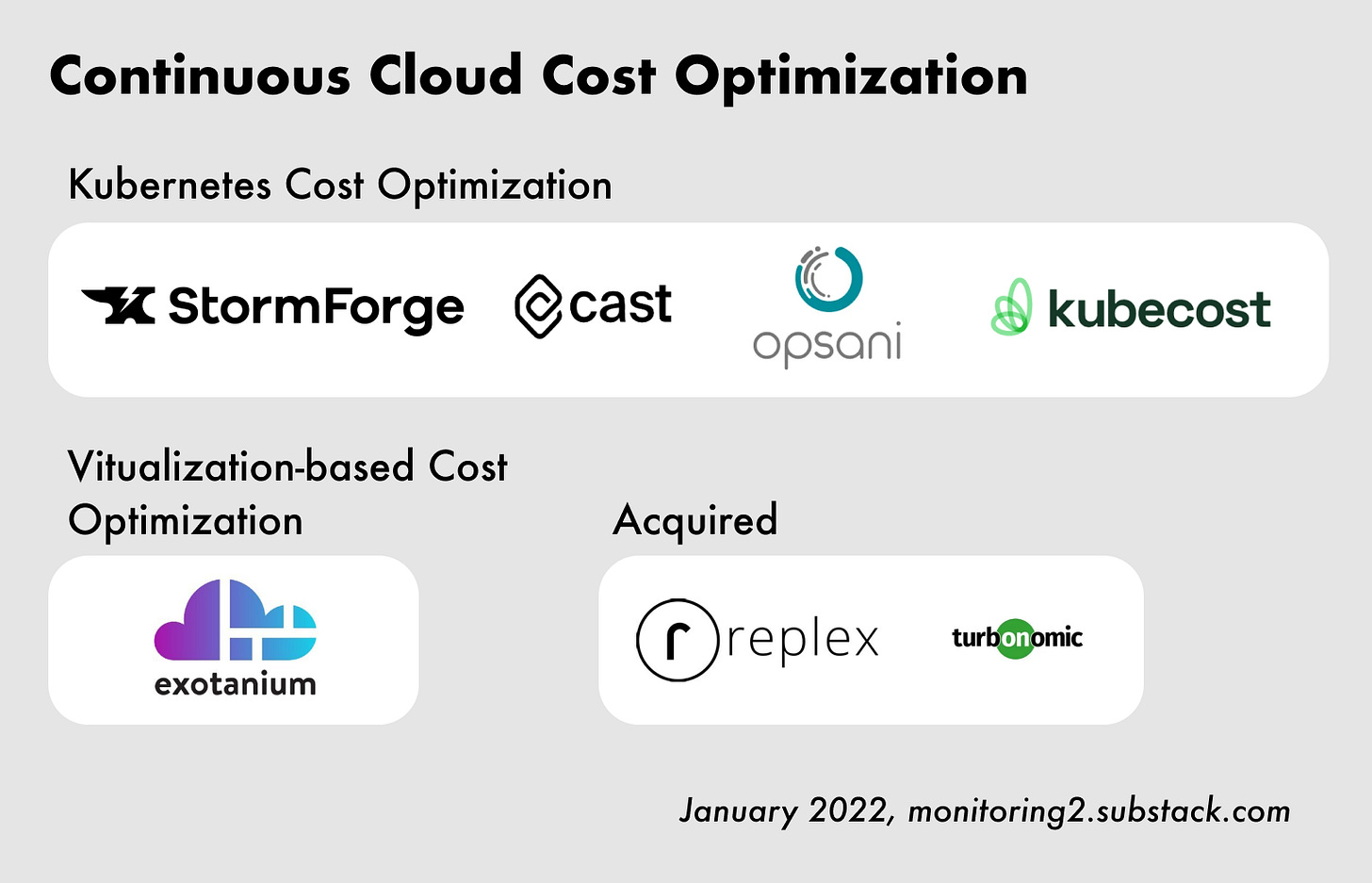The Continuous Cloud Cost Optimization Business
Don't tell the finance team... or do?
In the recent article, The Economist explored a relevant question concerning the “cumulus of data centres” (the cloud) that “makes geeks drool” (apparently):
If [businesses] entrust all their data—the lifeblood of the digital economy—to an oligopoly of cloud providers, what control do they have over their costs?
With development teams creating Kubernetes clusters everywhere from servers to first-person shooters and your 4x4, the consensus is that keeping cloud costs under control is getting harder, not easier. Bill reduction recommendations from a consultant or spreadsheet have a short shelf life.
Software that helps reduce your cloud bill is not new, but this newsletter focuses on startups that promise to continually optimize the cost of cloud-native workloads using monitoring, machine learning, and clever technical tricks.
Start your cost optimization engine
The technical core of all of these software solutions is something—like a dashboard, report, recommendation engine or monitoring agent—that makes or suggests an adjustment to reduce cost while balancing performance.
Stormforge takes an experimental approach: it scans clusters, optimization goals are set, then load tests are run in a test environment to find the ideal set of parameters for Kubernetes workloads. With some machine learning, you get a nice dashboard that shows the most cost-effective solution that exports to developer-friendly Kubernetes YAML:
Opsani’s approach works similar to many monitoring and observability solutions: they deploy a component directly in a production cluster that uses metrics, forwarded to a machine learning engine in their SaaS, to start identifying optimal configuration scenarios. While Opsani says infrastructure adjustment (like scaling up or down) can be done automatically using their product, cost-savings recommendations are also surfaced in their product for human intervention.
Taking a batteries-included approach to Kubernetes cost-optimization solution, cast.ai offers a distribution of Kubernetes designed for lower costs and ease-of-management by selecting the best cloud instance type, scaling policy, and identifying inefficiencies.
Cost savings with novel technical tricks
If you look at their marketing page, Exotanium also talks about cloud cost savings and optimization, but also mentions some “secret sauce from Cornell University”.
The technology is explored more in a 2020 article at The New Stack and paper that describes a new kind of virtualization later that enables workloads to be moved between computers without stopping —something that is not currently possible on any major cloud provider. Exotanium’s insight is that if running workloads are suddenly portable across regions, clouds, and instance types using their tech, then they can be quickly moved to other (i.e. cheaper) locations for cost-savings. It’s clever.
Like APM, but the finance team loves it
San Francisco-based KubeCost combines a cost-optimization approach with governance features inspired by Google internal tools. Recommendations and cost monitoring are combined with dashboards, reports, and real-time alerts to help teams make better decisions.
The KubeCost CEO, Webb Brown, put it in well in a Medium post announcing their funding:
Solving the problem of runaway Kubernetes spend—and empowering developer teams to manage these costs—starts with giving DevOps and engineering teams visibility into the black box that is Kubernetes spend.
Where have we heard this before?
As mentioned in the previous newsletter with the recent acquisition spree of logging startups by security companies, the messaging might seem familiar to anyone who has been following the monitoring space. To recap:
It’s gotten too hard for technical teams to manage
Built-in or free tools aren’t working
Better, real-time data is needed for visibility
Alerts, dashboards, machine learning, and recommendations help teams continually optimize and make better operational decision
Application monitoring data, first used at scale by engineering and ops teams addressing reliability or performance, is in the process of learning a new trick when combined with some cost information and machine learning.
And the finance team will love it.
Subscribe to get the next issue in your inbox or follow on Twitter.
Disclosure: Opinions strictly my own and not my employers. I am not a consultant, employed, or an investor in any of the companies mentioned. There are no paid placements, sponsorships, or advertisements in this newsletter.


